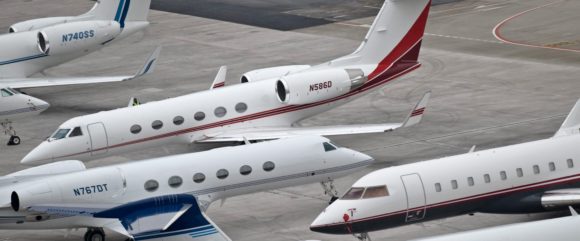The US airlines earned record profits of more than $12 billion in the first half of 2016. Their pre-tax margins increased to 15.5%, the highest level since the 2008 recession, and near parity with the average US corporation of 16.5%. This is as close to the corporate average as the airlines have ever been in their history, as air travel has, like grocery stores, been a high volume but low margin business. Traffic grew 5.7% year over year in the first half, while yields dropped 7.7% and cargo revenue dropped 15.6%.
What inferences can we draw from these results?
First, consolidation and capacity controls are working for airlines, keeping airfares relatively high. While airfares are lower in 2016, this is a reflection of lower fuel costs, from which savings have been split between consumers and airlines. The lower airfares are stimulating demand, but the overall US economy remains weak, with slow economic growth in the 1-2% range. Much of the traffic growth we’re seeing is a result of lower fuel prices, as economic stagnation continues and the middle class continues to shrink as the “haves” and “have nots” grow. Fortunately for airlines, fuel prices are projected to remain down for the foreseeable future, as the added proven oil well capacity in the United States provides a ceiling for prices.
Second, consumers are paying more, when fuel costs levels and inflation are factored in, than they were previously. If we go back in time to when fuel prices were similar, look at air fares, and inflate them to today, yields have improved in real terms. Prior to consolidation, real yields (inflation adjusted) fell from the inception of the industry very consistently. Post consolidation, real yields have remained steady or increased. Competition is no longer what it once was, as those who warned against the impacts of consolidation and an oligopoly predicted. But profits for airlines, who lost money for many years, are finally up and restoring decimated balance sheets.
Third, profitability for airlines is important, particularly as they need capital expenditures to renew their fleets and rework information systems. Airline infrastructure, particularly in IT, remains stuck using 30 plus year old technology, as replacing all of the systems would be a massive project to bring them into the modern age. But they need to do that to make them hack-proof. This year, we’ve seen hacks at several major airlines and a total system failure at another airline, each costing tens of millions of dollars while inconveniencing tens of thousands of travelers. The problem is that the airlines aren’t making the efforts to invest in infrastructure at the levels they need to to ensure their business remains secure. They will need to do so, as even the National Security Agency has reportedly been hacked this week. The question isn’t whether a hacker will demand a ransom to not disrupt systems, it is when.
Fourth, a healthy industry enables better service and more closely matching price to value. United and Delta have announced major upgrades to their international business class, JetBlue introduced Mint on its transcontinental routes, and airlines are once again trying to differentiate themselves, even if they are quickly copied by competitors. But the flying experience remains difficult in short-haul markets, as airport security constraints have made the 200-300 mile trip easier by car. The new opportunities for competitive differentiation are moving from the air to the ground. Airlines can only do some much with the same cabins traveling at the same speeds as their competitors. But they can do something about service before and after flights, which will be the next frontier for innovation.
Fifth, labor will want its fair share of profits. Airline employees have seen their wages slashed over the last two decades for doing the same job. Working for less doesn’t make employees happy. Compounding the problem, the FAA increased flight hour requirements for new pilots fivefold a couple of years ago and changed the fundamental economics of that profession. It is difficult to obtain the 1,500 hours of flight time to become an airline pilot, and prohibitively expensive for a prospective pilot, even if many of those hours are paid for as a flight instructor. Nobody wants to invest $250,000 or more to train for a job that starts at $22,500 with a regional airline, as the ROI simply doesn’t work. Something has to give, or airlines simply won’t find enough new pilots to fly their airplanes as the current generation retires.
Sixth, the airline industry has always been cyclical, and subject to external events. Today, some European airlines are seeing traffic fall due to unrest with migrants in certain destinations, and lingering effects from terrorist attacks. We’re a 9-11, SARS, or other external event away from a dramatic drop in traffic that could negatively impact profitability. The adage “make hay while the sun shines” is particularly appropriate for this industry.
The US carriers have done well in the first half of 2016, and the outlook is strong for the second half of the year. Let’s hope that profits are reinvested in people, systems and aircraft to maintain a strong and competitive airline sector.
Views: 0


